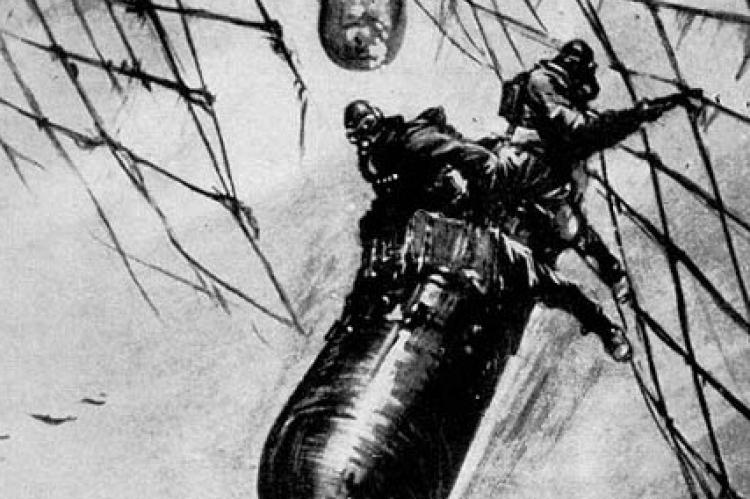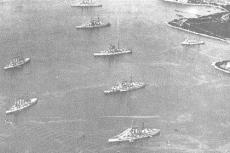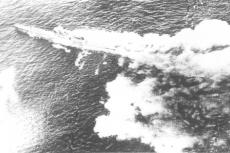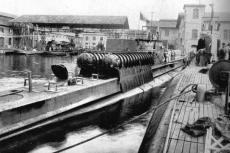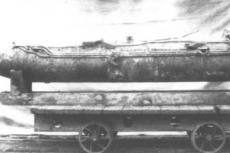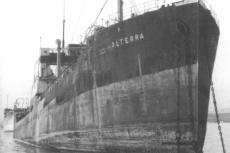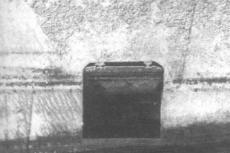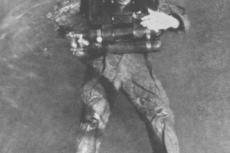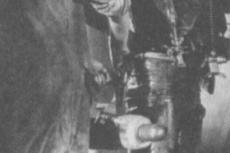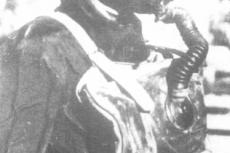First Frogmen
During the first years of World War II Italian frogmen demonstrated to the world how effective a weapon a frogman could be. Hidden by the water, these frogmen mined the Allies’ ships as they were moored ‘safely’ in their own waters.
The idea of such a weapon arose in World War I, when experiments were carried out using different vessels to carry mines into the Austro-Hungarian naval base in Pola. The weapon was developed during the inter-war years
1915
While the war was raging on the battlefields of Europe, and submarines were terrorising the ships on the high seas, the Austro-Hungarian fleet and Italian fleet lay mostly well protected in their harbours, surrounded by mine-fields and anti-submarine nets. This passivity was, in the main, due to the ongoing submarine war.
In 1915, after Italy had severed its connections with its German and Austrian allies, and joined the English-French Alliance, Italian naval officers had thought long and hard about how the Austro-Hungarian fleet could be attacked in the harbour.
The first attempt, carried out from Venice, was made by the Italian naval captain Pellegrine, who, with three other crew members in a motor-boat, tried to attack the Austro-Hungarian fleet in Pola.
Pellegine’s boat Grillo was equipped with caterpillar tracks which enabled it to crawl up over the various barriers in Pola. Two torpedoes, which hung on the side of the boat, were to be sent against the ships in the harbour. Pellegrine’s attempt failed because the boat was discovered as it was forcing a barrier.
Pellegrine and his crew spent the rest of the war in captivity.
Targetting Pola
The desire to hit the Austro-Hungarian fleet in Pola was, however, undiminished, and much thought was put into possible solutions. Naval-lieutenant Raffaele Paolucci worked out a plan in 1918 whereby he was to be transported by motorboat to about a sea-mile out of Pola. From here he would swim into the harbour towing a mine.
Under one of the battleships he would tie a four meter-long rope to the mine and thereafter sink it by letting the air out of its two floatation tanks. The other end of the rope was to be fixed to the hull of the ship.
The mine, which contained about 100 kg of TNT, had an automatic timer, and would explode in about 4 meters of water close to the side of the ship. As soon as the mine was activated Paolucci would swim out of the harbour towards the outer breakwater and wait for the explosion. He would then swim out to sea and, with his back to the enemy, signal to the motorboat to pick him up.
Mignatta
After months of nocturnal swimming near Venice, towing a mock-up of the mine, he abandoned the project.
Simultaneously with the efforts of Paolucci, Italian engineer and naval officer Raffaele Rossetti was working on a modified compressed-air torpedo, named Mignatta, which, half-submerged, would carry him and another crew member into Pola. The men, in diving suits, would sit astride the torpedo and steer it into the harbour and thereafter over to one of the battleships. Two mines, each of 170 kg TNT, were fixed to the head of the torpedo.
The mines were to be hung in a 4 meter-long rope under one of the battleships. Rosetti had constructed a powerful magnet which should keep the rope fixed to the side of the ship.
Captain Constanzo Ciano had been watching the efforts of the two men, and asked them to cooperate with him in completing the project with Mignatta. This cooperation soon proved to be effective, and after several tests and modifications Mignatta was ready for action. Two models of Mignatta were built, S1 and S2.
Now or never
However, in October 1918, an armistice was in the offing, and it was obvious that it was now or never if the Mignatta was to see action. In the evening of 31 October, 1918, a motortorpedo boat from Venice set sail for Pola. On board were Paolucci and Rossetti and, on the deck, the S2 and a motorboat which would carry the two men and the Mignatta close in to Pola. At 22.13 the S2 was released from the motorboat and sailed in to Pola, which was reached at 02.00 on 1 November, 1918. In the harbour the two men passed three anti-submarine nets by pulling the S2 over them.
Once inside the harbour they steered in between two illuminated battleships and directly towards the 21000 ton battleship Viribus Unitis. They fixed one of the mines and then rapidly sailed away – leaving a trail of silvery bubbles.
On their course away from the battleship they were discovered, but before being taken prisoner they had managed to arm the second mine, and then left the Mignatta to its own devices. It wandered around in the harbour, and when the compressed-air was exhausted it finally came to rest against one of the ships.
War’s over - well almost
That they were not discovered before was due to the fact that it was a day of festivity in the harbour, where they were celebrating the capitulation of the Austro-Hungarian fleet, which had been handed over to the South Slavic National Council. However, Paolucci and Rossetti had no knowledge of this, and, at 06.20, the mine that was placed four meters under the waterline of the Viribus Unitis exploded. A quarter of an hour later the battleship rolled over and sank.
That it could go so completely wrong was due to the fact that there was thought to be no reason to keep the watertight doors closed. Immediately after this first explosion a second explosion was heard. It was the second mine, still attached to the Mignatta, that exploded directly against the side of the 7000 ton freighter Wien, and sent her to the bottom. Ten days after Viribus Unitis had been sunk Germany accepted the Armistice conditions, and World War I was brought to a close.
New weaponry
The attack at Pola was a success – the Italian fleet had obtained insight into a new weapon. The weaknesses of the weapon were that the crew were visible above the surface of the water, and that the compressed-air torpedo sent out a stream of air-bubbles. These deficiencies would have to be corrected so that an attack could be carried out with the torpedo and crew completely submerged, and without air-bubbles giving evidence of the attack.
The interwar years
In the inter-war years another alliance was formed, an alliance in which Italy was not allied with England. Italy felt itself squeezed between the English fleet in Alexandria and the French fleet in Toulon. That England could rapidly reinforce their Mediterranean fleet with units from their Atlantic fleet didn’t make the Italian frustrations any the less. Italy needed a weapon that could reduce the scope of a possible blockade.
(...)
Download the full article ⬇︎
Originally published
X-Ray Mag #7
BALI - visiting Tulamben. Science: Salt of the sea. Conservation: Mangrove. Polluce wreck. The first frogment. The Techni-sub story. Royal Tasmania. Portfolio: A tribute to Michael Portelly. Technical matters: Going solo or not? Photography: Manipulation? Ecology: Anemone city Profile: Miranda Krestovnikoff. Science: Drinking seawater


